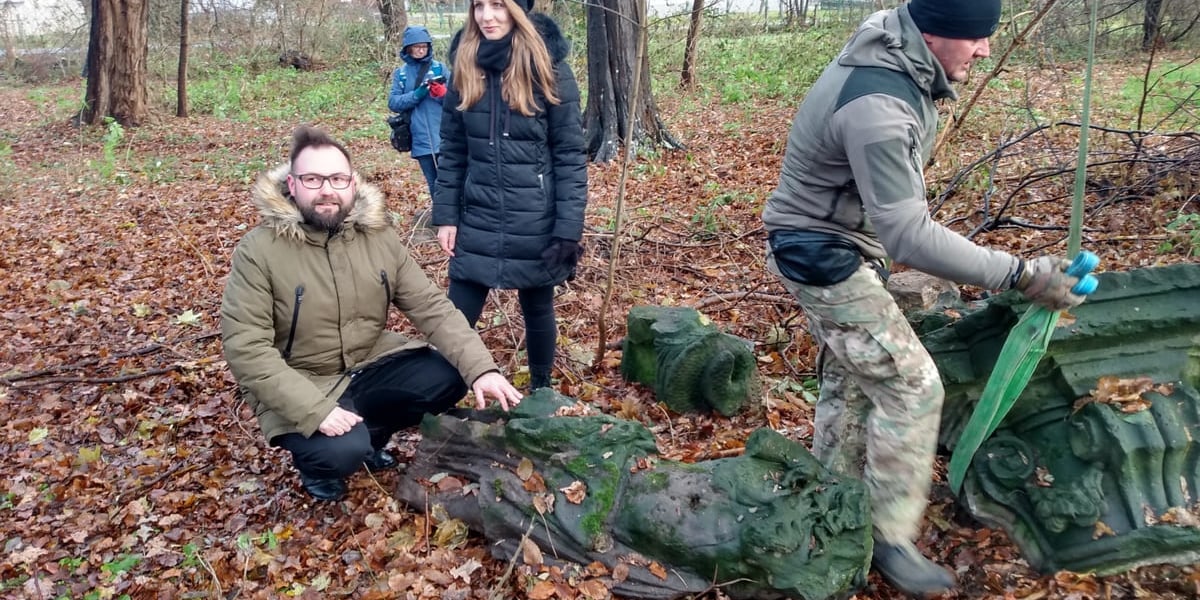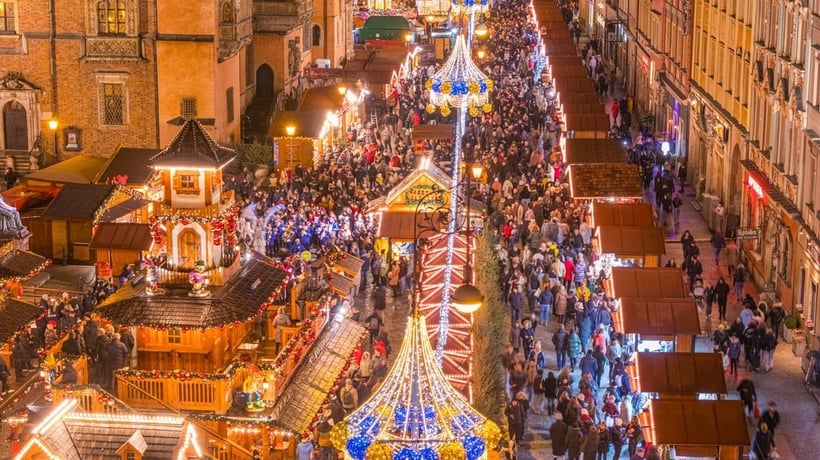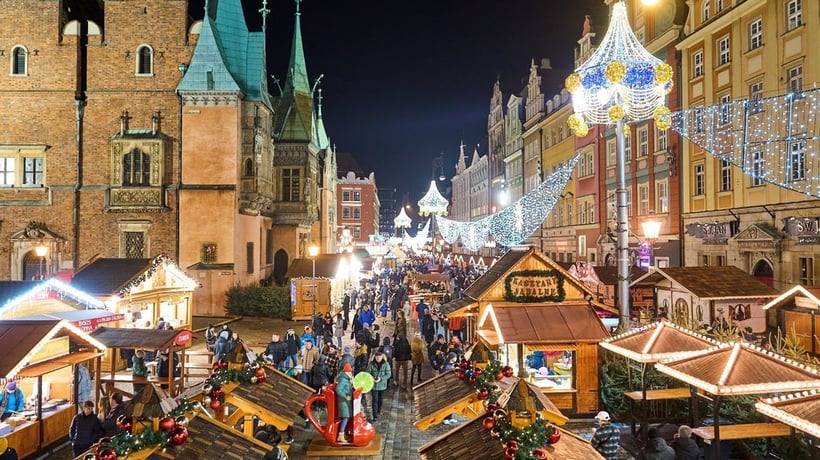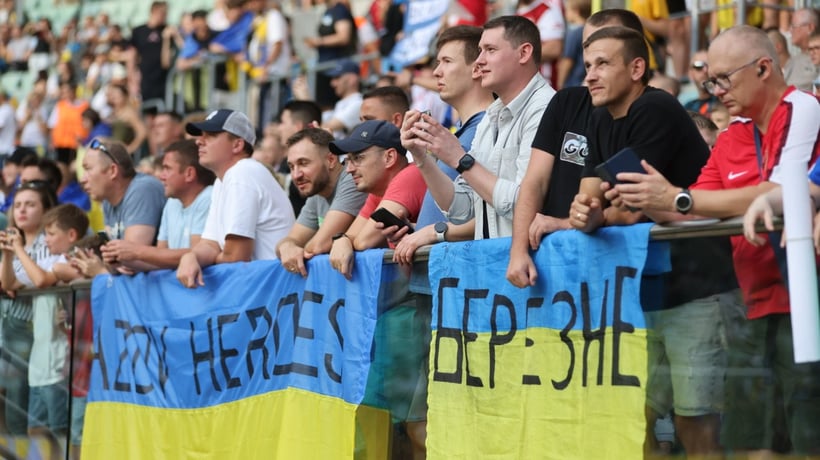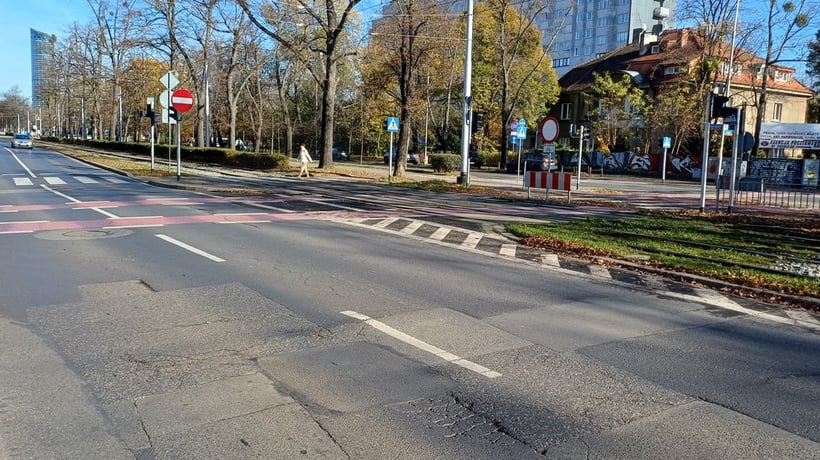This sensational discovery was made by a historian from Wroclaw, Tomasz Sielicki, Ph.D. His inquiry proved that a new sculpture of Neptune had been created during the general renovation of the fountain on Nowy Targ Square in 1874. It had been made by Albert Rechner, the creator of Linnaeus’ bust in the Botanical Garden. This version of the sculpture was destroyed in 1945, whereas the original work was kept... in the private property of Lieutenant Carl Müller, a former city councillor. According to press information from that period, the old Neptune was displayed in Müller’s property, in Wielowieś near Syców. And, indeed, it was still there in 2022.
‘The Wroclaw fountain was not kept in Wielowieś as a whole, but many of its fragments were there, including the most important one: the sculpture. Nobody knew it was located there. The real miracle is that this original baroque Neptune was not destroyed during the siege. It is damaged, anyway. It lacks the head and hands. The figure is quite well-visible, so it can be displayed,’ says Tomasz Sielicki, Ph.D.
On Wednesday 7th December 2022, the fragments of the statue were transported to the Old Jewish Cemetery at Ślężna street. Neptune was deposited in the City Museum of Wroclaw. Here it will be secured, examined and – within the scope of available funds – renovated.
Specialists confirm it is the original 18th-century Wroclaw Neptune.
The broken figure was found in Wielowieś by Tomasz Sielicki, Ph.D., and Joanna Biniek from the office of the Lower Silesian Provincial Conservator. The decisive opinion in this matter was expressed by art historians: Barbara Andruszkiewicz and Romuald Nowak, Ph.D., from the National Museum in Wroclaw. They confirmed the authenticity of the recovered Neptune.
Why was Neptune located on Nowy Targ Square?
In medieval Wroclaw, Nowy Targ Square functioned as the third city market square. It was, among others, a centre of trade in live animals. Animals had to be watered, so a well was built in the middle of the square in 1592. Two hundred years later, it was found to be unusable, and the city council decided to modernise the water intake and to give it an imposing architectural setting.
Their choice fell on the figure of Neptune. According to mythology, whenever Neptune stuck his trident in the ground, water flew from there. This was how rivers would form. In the 18th century, fountains with images of Neptune became popular throughout Silesia and Czechia. One of the theories says that the Neptune fashion was originated by Michael Mandig from Gdańsk, who made a statue of the god of the seas in Olomouc, in Moravia.
The fountain was erected in 1732. The investment was completed by the stonemasonry company of Johann Adam Karinger. The creator of the figure was Johann Baptista Lemberger (who made also such works as the Lubomirski Gate at Jasna Góra in Częstochowa).
The fountain on Nowy Targ Square consisted of an eight-sided basin containing four figures of legendary sea creatures – mermaids and tritons – in the middle. Each of them supported one shell, all of which formed a bowl. On the top of the capital rising from the bowl, four dolphins were placed. Water gushed from their mouths into the bowl and from there into the pool. The work was crowned with the figure of Neptune. He was presented as a bearded man with a stern look, who carried a trident in his right hand.
